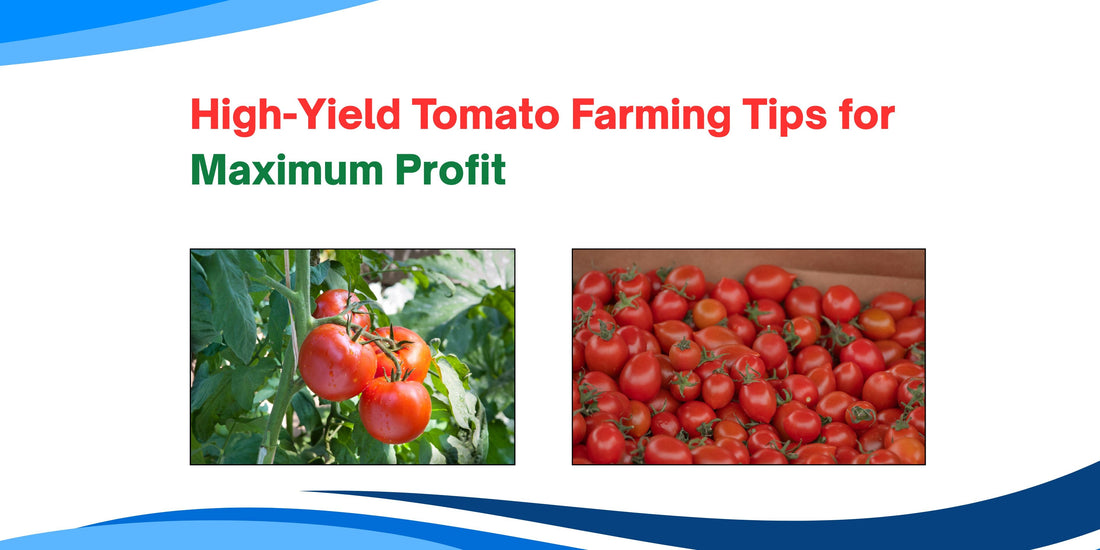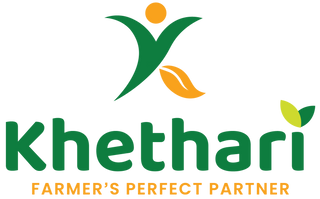
High-Yield Tomato Farming Tips for Maximum Profit
Introduction
Tomato (Solanum lycopersicum) is one of the most widely cultivated and profitable vegetable crops in India. Known for its short duration and high market demand, tomato farming can provide excellent returns if managed scientifically. However, achieving high yield and quality fruits depends on adopting the right practices—from seed selection to harvesting.
In this article, we’ll explore proven high-yield tomato farming tips to help farmers boost productivity and profitability.
1. Choose High-Yielding and Disease-Resistant Varieties
Selecting the right variety is the first step toward success. Go for hybrid or high-yielding tomato varieties that are suited to your region and resistant to common diseases like bacterial wilt and leaf curl.
Popular High-Yield Tomato Varieties in India:
- Arka Rakshak (Hybrid, high yield & disease-resistant)
- Pusa Rohini
- Arka Meghali
- Arka Vikas
- Namdhari NS-815
These varieties produce uniform fruits, tolerate heat and diseases, and are suitable for both open-field and protected cultivation.
2. Prepare Fertile and Well-Drained Soil
Tomatoes thrive in loamy or sandy-loam soil with good drainage and a pH range of 6.0–7.0.
Soil Preparation Tips:
- Deep plough the field and expose the soil to sunlight to kill harmful pests.
- Add well-decomposed farmyard manure (FYM) or compost at 20–25 tons/acre before transplanting.
- Incorporate Trichoderma or biofertilizers to improve soil health and suppress soil-borne diseases.
3. Adopt Proper Nursery Management
Healthy seedlings lead to healthy plants. Prepare the nursery bed 1 meter wide and apply neem cake and FYM to protect seedlings from root rot.
Nursery Tips:
- Use certified seeds and treat them with fungicides or bio-fungicides (e.g., Trichoderma).
- Maintain optimal watering and partial shade.
- Transplant 25–30 day old seedlings at a spacing of 60 × 45 cm.
4. Follow Efficient Irrigation Practices
Tomato plants need regular but controlled irrigation.
- Irrigate immediately after transplanting.
- Maintain consistent soil moisture avoid overwatering to prevent fungal diseases.
- Drip irrigation with fertigation ensures uniform water and nutrient supply while saving water and labor.
5. Balanced Fertilizer Management
Balanced nutrition ensures higher fruit yield and better quality.
Recommended Fertilizer Dose (per acre):
- FYM: 20–25 tons
- NPK: 100:50:50 kg (Nitrogen:Phosphorus:Potassium)
- Apply half nitrogen and full P & K at transplanting, and the remaining nitrogen in two equal splits during flowering and fruiting.
Include micronutrients like calcium, boron, and magnesium for firm, disease-free fruits.
6. Manage Pests and Diseases Effectively
Pests and diseases can severely reduce yield if not managed properly.
Common Pests:
- Fruit borer: Use pheromone traps and spray neem oil or Bt formulations.
- Whitefly & aphids: Control with yellow sticky traps and neem-based insecticides.
Common Diseases:
- Early blight, bacterial wilt, and leaf curl: Follow crop rotation, use resistant varieties, and apply bio-control agents like Pseudomonas fluorescens.
Adopt Integrated Pest Management (IPM) for safe and sustainable control.
7. Pruning and Staking for Better Fruit Set
Pruning removes excess foliage, allowing better sunlight and air circulation.
Use stakes or trellises to support plants and prevent fruit contact with soil, reducing rot and pest attacks.
8. Harvesting and Post-Harvest Care
Harvest tomatoes when they are firm and mature, depending on the market distance:
- For nearby markets – harvest at red-ripe stage.
- For distant markets – harvest at breaker or pink stage.
After harvesting:
- Grade fruits by size and quality.
- Pack in ventilated crates.
- Store in a cool, dry place to maintain freshness.
9. Profitability and Yield Potential
With proper management, tomato yield can reach 250–350 quintals per hectare under open-field conditions, and up to 500 quintals/ha in protected cultivation. Profit margins are higher when you sell off-season or directly to consumers.
Conclusion
High-yield tomato farming requires careful planning, scientific techniques, and timely management. From choosing the right variety to adopting drip irrigation and IPM, every step contributes to productivity. By following these high-yield tomato cultivation tips, farmers can increase yield, quality, and overall profitability.
